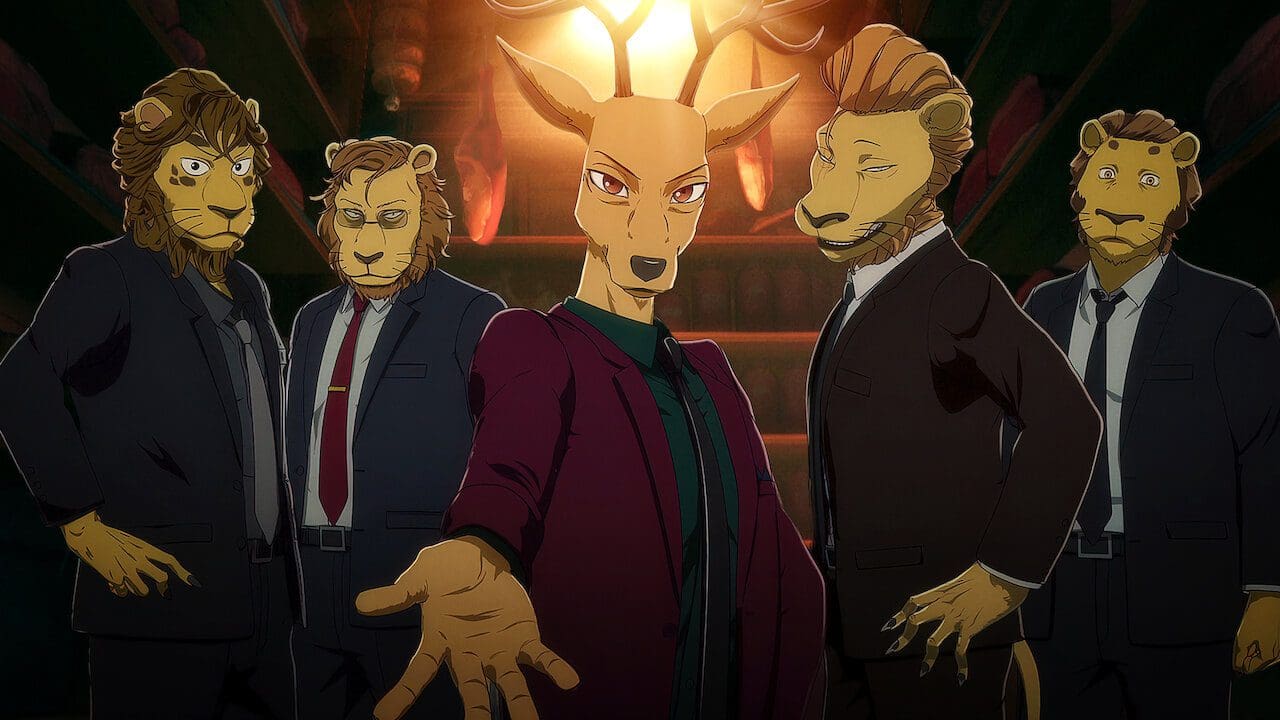
(Disclaimer: This review is based on the English language dub of the series.)
It’s a mystery why yours truly came to like Beastars. Not really being into anime, and not being what could be described as furry (NTTAWWT), the reason is unclear. Truthfully, this writer threw in the towel on angsty teen melodramas somewhere in One Tree Hill’s second season. The characters of Beastars may have drawn me in initially, but the expansion of the world around Cherryton Academy, where most of them study, might best explain what’s compelling about the show.
Legoshi, the socially awkward but physically imposing gray wolf, goes through a metamorphosis in Season 2. He is less focused on his studies or his attraction to Haru, a spirited dwarf rabbit, than he is on solving the mystery of his herbivore classmate who was killed and devoured. This leads him off school grounds and into the seedy alleyways of “The Black Market” where herbivore flesh is sold to carnivores willing to skirt the laws against this. His internal monologues now seem more classic film noir instead of teenage anxiety. His friends and classmates notice the physical changes as he trains with a hard-boiled panda for the fight of his life: a battle against an impossible foe he sees every day in class.
Deeper into the Black Market’s belly than even Legoshi is Louis, the red deer who was the big mammal on campus, leading man of the drama club, and survivor of an unnerving childhood. After his unsung part in rescuing his former lover, Haru, from an underworld gang, he (and the audience) fully expected he’d be eaten. Instead, he has grown in power as the head of the Shishigumi, forcing him to repeatedly reflect on his own biases towards carnivores and his expectations for himself.
Within the boundaries of Cherryton, other students, too, are constantly aware of their multi-tiered society. In the Black Market, herbivores can quickly become carnivores’ food and carnivores, herbivores’ medical supplies. But all animals are aware of their own boundaries and some of their peers’. Smaller animals, such as squirrels and rats, have smaller doors to classrooms and are encouraged to keep walls to avoid being stepped on. Most herbivores live with the perpetual fear of being purposefully eaten or even accidentally dismembered (in the middle of class no less) by their physically far stronger neighbors and classmates. And carnivores, especially the larger and more powerful ones, are subject to a seemingly necessary (but still awful) second-class citizenry of forced vegetarianism and law-mandated muscle suppression medications.
All of these concepts come to a head during the finale of Season 2 as Legoshi attempts to confirm his own stance on eating living things, Louis has to make a gristly choice for another after failing to make one for himself, and the school begins moving towards segregation. Whereas the first two seasons were bridged by the unsolved murder of a Cherryton student, the link between the second and third looks to be Legoshi’s continued work towards the protection of herbivores.

